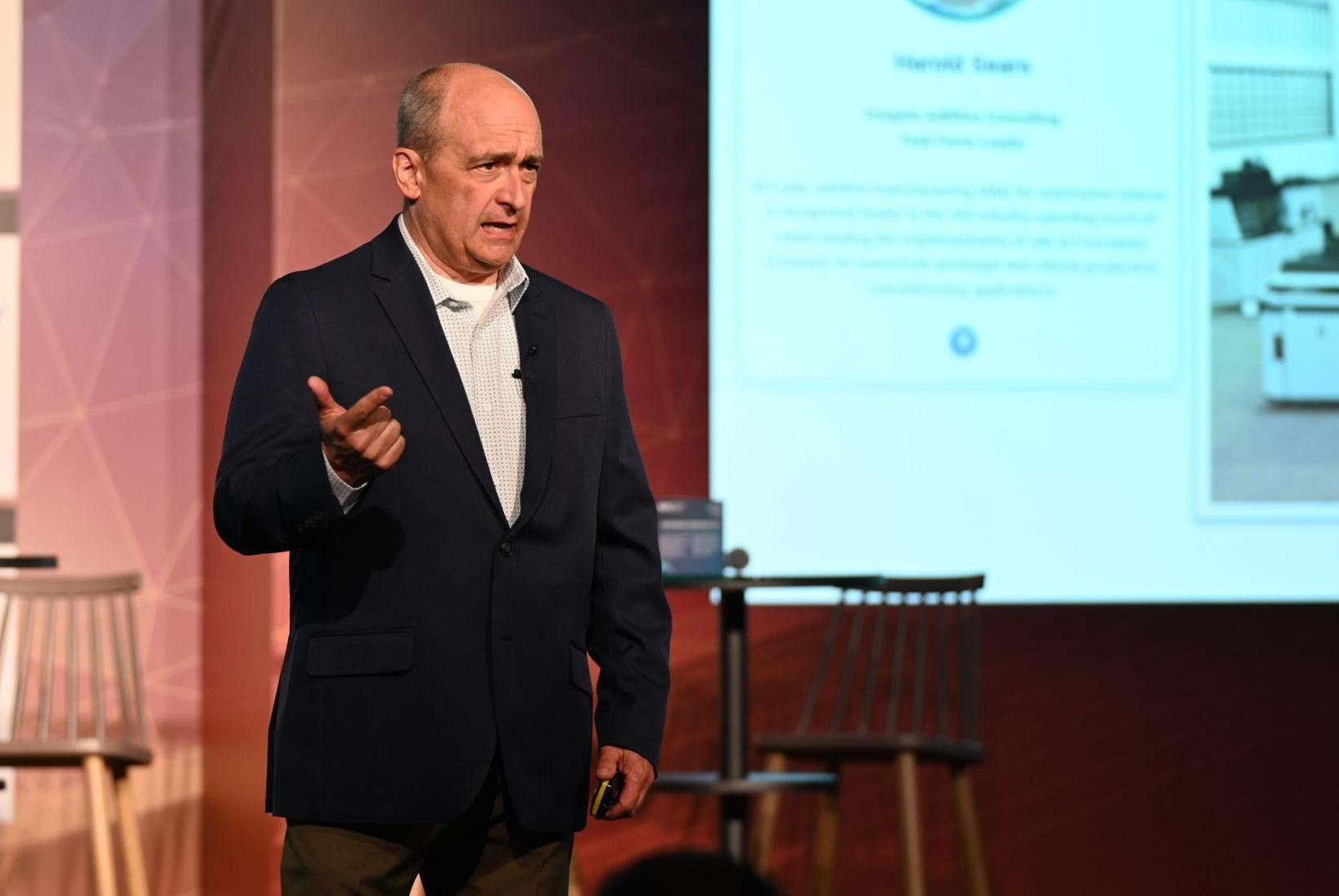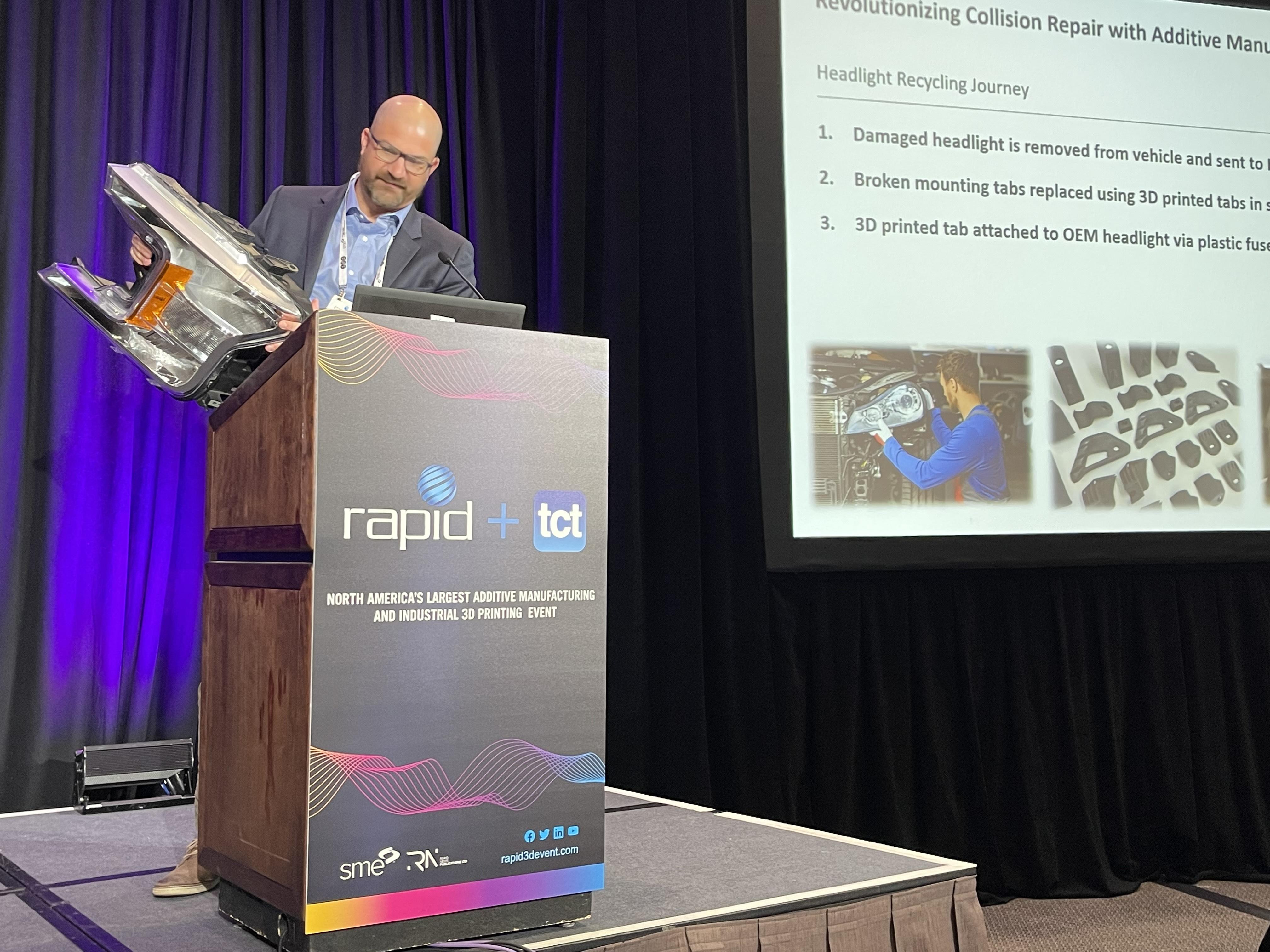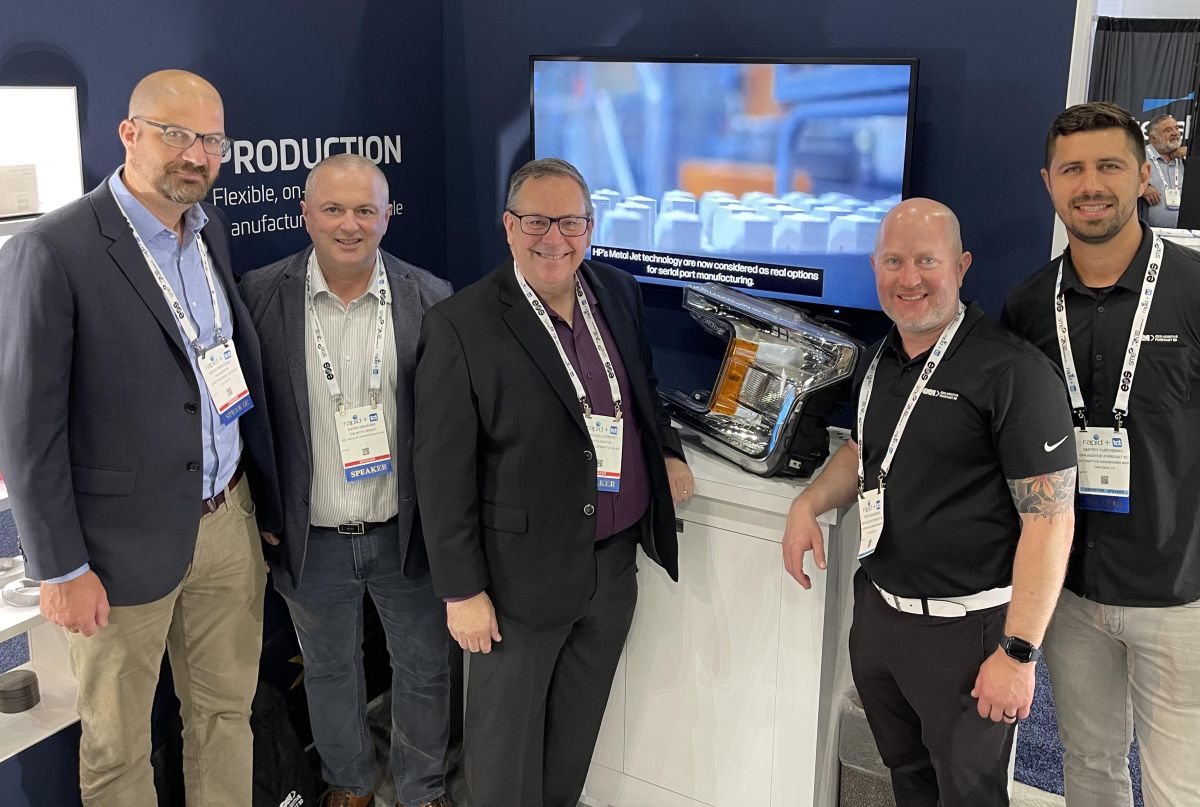In recent years, original equipment manufacturers (OEMs) have adopted 3D printing, also known as additive manufacturing (AM), for end-use parts. Some have set up 3D printing production facilities, focused on short-run manufacturing or the design of complex parts.
To determine the full potential of 3D printing and ensure the technology and on-demand parts are brought to the collision repair industry through a safe and regulated 3D supply chain model, ambassadors from the International Bodyshop Industry Symposium (IBIS) formed the 3D Printing in Collision Repair Task Force at IBIS USA 2023, in Nashville, TN. The aim was to investigate the potential opportunities of 3D printing in the automotive and collision industries.
Led by Harold Sears, formerly in the additive manufacturing department at Ford Motor Company, the task force consists of global business and industry associations focused on auto collision repair. Members include Jason Moseley, IBIS Global; Mario Dimovski, The Boyd Group; Francois Minec, HP; Daniel Wittek, 3M Automotive Aftermarket Division; Rebecca Fecteau, BASF; Steve Fletcher, ARA; Brandon Teets, ADAC Automotive; Dave Hartman, Carhart Products; Jeff Peevy, I-CAR; AJ Strandquist, Wurth Additive Group; and Justin Elliot, LKQ Europe.
After a comprehensive analysis, the task force produced a report showcasing its findings in September 2023. Members identified a transformative potential for 3D printing, with immense opportunities.
 Harold Sears, formerly in the additive manufacturing department at Ford Motor Company, was named head of Auto Additive’s Strategic Advisory.
Harold Sears, formerly in the additive manufacturing department at Ford Motor Company, was named head of Auto Additive’s Strategic Advisory.
“The integration of 3D printing into the collision repair industry presents exciting possibilities that can revolutionize vehicle restoration, benefiting all stakeholders,” according to the report.
These include collision repair centers, insurance companies, OEMs, vehicle salvage and part recyclers, and aftermarket auto parts suppliers.
However, the task force also recognized challenges regarding safety, quality and reliability.
“While the adoption of 3D printing brings numerous opportunities for efficiency, cost reduction, and sustainability, it is crucial to address the challenges associated with the use of poor-quality 3D printed auto parts,” the report stated. “The risks posed by substandard parts, including safety concerns, incompatibility and warranty implications cannot be underestimated.”
Task force members said these risks have far-reaching implications for all industry stakeholders, as well as 3D printing providers.
One of the significant challenges Sears pointed to is the issue of unregulated materials, leading to inconsistencies in quality and performance.
“This problem is exacerbated when parts are produced using low-grade 3D printing machines that do not meet industry standards,” explained Sears. “These pose significant safety risks, as they may not have the necessary strength, durability or heat resistance required for automotive applications.”
Additionally, Sears said there is a lack of standardized certification processes for 3D-printed parts, making it difficult for insurers, suppliers, repair shops and consumers to trust their reliability.
Another challenge is the knowledge gap in the collision industry.
“There is a lack of comprehensive understanding of the standards and best practices using 3D printing technology,” noted Dimovski. “This includes knowledge about appropriate materials, printing technologies and post-processing methods required to produce high-quality parts.”
Taskforce members recommend “… a prohibition on the use of 3D printed parts in collision repair and replacement if they are not endorsed by OEMs or certified by recognized quality standards.”
Members stressed the importance of developing education and training to increase awareness and knowledge about 3D printing technology, quality standards and best practices. In addition, they advise establishing a regulatory body or governing authority to enforce quality standards, certification processes and compliance measures for 3D-printed parts.
Auto Additive Formed to Ensure 3D Printing Quality and Consistency
Following the report, Auto Additive was established to provide 3D printing solutions to the automotive repair industry. The company provides AM services to collision, aftermarket and OEM clients by managing their current CAD files to print parts or offer engineering services and build their own exclusive data database.
Sears, named head of Auto Additive’s Strategic Advisory Council, said the company’s mission is to provide safe, OEM-compatible and industry-ready products using proven automotive-grade materials backed by rigorous internal testing.
The goal is to create customer success stories and proofs of concept to highlight the use of 3D printing and bring these solutions to market with clients.
“Auto Additive uses industrial-grade 3D printers and materials to produce the highest-quality parts, the same 3D printing technology also used by industry-leading vehicle OEMs,” shared Sears.
The company has formed a global partnership with HP 3D Printing and uses its network of additive manufacturing suppliers who also service OEMs.
Sears said the business is also leveraging blockchain-driven software from Assembrix to deliver cutting-edge solutions that meet the highest quality standards in the aftermarket and OEM sectors.
“Our advanced blockchain-driven software provides traceability and eliminates the misuse of our clients' digital inventory, controlling where we print and how many,” explained Sears. “Each product has a unique alphanumeric identifier, searchable via our website, tracing to the batch date, location and parts data, ensuring ultimate IP protection and product authenticity for clients.”
Auto Additive and its founding partners, HP, Headlights.com and 4Plastic, supply 3D-printed tools, jigs and repair parts, such as the industry's first polypropylene weldable highlight tabs.

At the RAPID+TCT conference in June, Auto Additive showcased a 3D-printed and weldable headlight repair tab using polypropylene material and processes that align with GM’s GMW18647 worldwide standards. These tabs are directly weldable using plastic fusion welding directly onto the headlight base or the broken part.
Diana Trajcevska, Auto Additive’s director of Additive Innovation, said the industry first was a collaborative effort with Forecast3d and Headlights.com. It used HP 5200 Multi-Jet Fusion technology, which is used by OEMs in their end-use parts manufacturing.
In the U.S., nearly 1 million headlights are purchased annually for collision repair, often discarded due to broken plastic mounting tabs, according to Headlights.com. This can lead to significant repair costs and landfill waste, with headlights for general makes and models ranging from $300 to $4,000 each, while prestige vehicle headlights can cost significantly more.
“This breakthrough allows previously damaged headlights with missing tabs to be refurbished to or above industry standards such as the use of two-part epoxies, plastic rod buildup or metal staples,” said Trajcevska. “The result delivers various benefits to the industry and environment, including reduced repair costs, shorter cycle times and diverting approximately 8 pounds of plastic waste per repaired headlight from landfills.”
Additionally, she said it offsets the carbon footprint by eliminating the need to produce parts, and stock and ship new headlights to repair shops.
Sustainability is one of the company’s core focuses, helping the industry repair more parts and divert from landfills. Auto Additive joined the Additive Manufacturer Green Trade Association (AMGTA), an industry-leading 3D printing sustainability body, joining some of the world's biggest 3D printing firms. AMGTA brings together companies throughout the manufacturing ecosystem to promote and elevate the conversation around sustainable additive practices.
Brian Driehorst, chief revenue officer from Headlights.com, said the weldable headlight tabs are planned to launch in the U.S. and Canadian markets in late September.
Through collaborations like these, Auto Additive is working to demonstrate the practical applications and benefits of its 3D printing solutions, paving the way for broader market adoption.
Auto Additive plans to lead the educational and training aspects of 3D printing, working with bodies such as I-CAR, to ensure the collision industry is well-versed in the capabilities and limitations.
3D Printing Opportunities for the Collision Industry
Sears said 3D printing offers massive potential to the collision industry for producing replacement or repair parts.
“It allows for the creation of custom tools and jigs tailored to specific repair tasks, improving efficiency and accuracy in the repair process and reducing labor time and costs,” he explained. “The ability to print parts on demand, especially if they are out of stock or discontinued, can significantly reduce downtime for repairs.”
He said this is particularly useful for older or rare vehicle models where parts may not be readily available. In addition, 3D printing can facilitate rapid prototyping and testing of new repair methods and tools, allowing for faster innovation and improvement in repair techniques.















Stacey Phillips Ronak